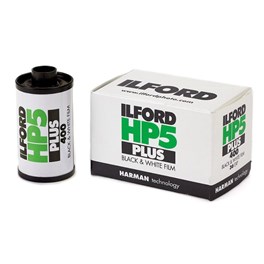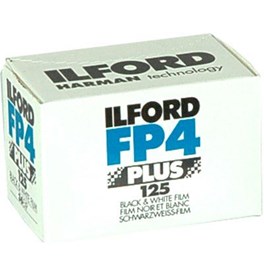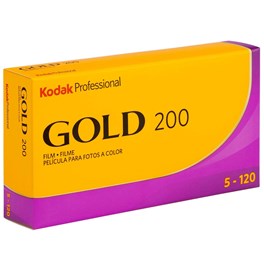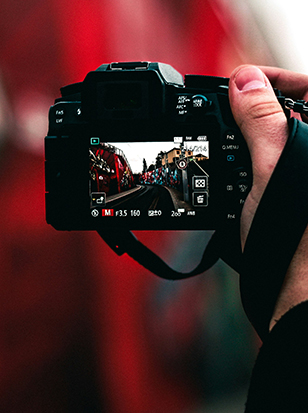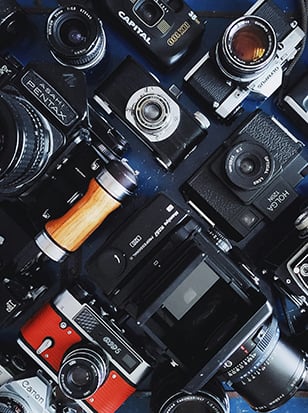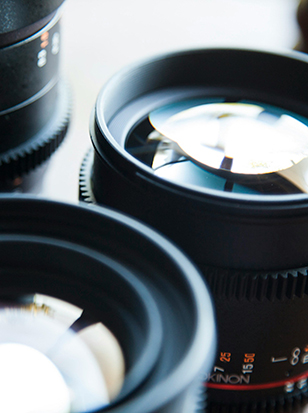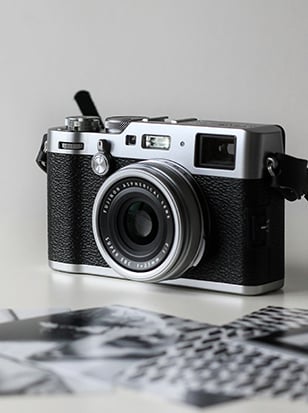
We’re cheering on the continuing great film revival as we round up the best film you can buy for your camera right now. Analogue photography has been going from strength to strength in recent years as more and more photographers discover the alchemical joys of shooting on film formats. Whether you want to explore the pastel tones of Kodak Portra or embrace the high-contrast monochrome drama of Ilford XP2, we’re here to help you find your next film. Or, indeed, your first.
We’ve covered two main types of film in this guide: 35mm and 120. These are the most common film formats – 35mm frames measure 24mm x 36mm (the same as a full-frame digital sensor). Larger 120 films, meanwhile, vary in specifics, but will measure somewhere between 6cm x 4cm and 6cm x 7cm.
Neither is necessarily ‘better’ – 35mm is cheaper, easier to handle, compatible with lighter cameras and gives you more shots per roll. However, 120 film gives you much more resolution and detail, and produces images with a gorgeous, almost three-dimensional ‘depth’ that’s impossible to replicate.
We’ve covered films in both colour and black and white formats. The only other thing you need to be aware of is the film ISO speed, which is different for each stock. The higher a film’s speed, the more sensitive it is, meaning it can be used in situations with less available light and still produce acceptable images. However, more sensitivity generally comes with more grain, so it’s up to you which you prefer.
Enough prevaricating – let’s get started and count off the best camera film to buy in 2024…
Quick Navigation
Best colour 35mm film
Colour 35mm film is immense fun to shoot. The ecosystem of cameras that shoot 35mm is broad and varied, with everything from point-and-shoot compacts to fully manual SLRs. There are colour films with low ISO speeds that are great for shooting pin-sharp images full of detail and clarity, and there are also great films with higher speeds that function well in low light.
While for years Kodak and Fujifilm have been the only games in town when it comes to colour film, recently we’ve seen other manufacturers enter the space with new stocks, like Lomography and more recently Harman. There’s plenty of variety, lots to experiment with, and a huge amount of fun to be had when it comes to 35mm colour film. Here we’ve picked out a few of our absolute favourites.
Harman Phoenix 200 35mm Film
Introducing Harman Pheonix 200 35mm Film, an ISO 200 colour negative film that embodies the essence of analogue photography. Crafted in Mobberley, this film offers a genuine analogue look with high contrast, visible grain, and vibrant colours, and performs well in consistent light. Phoenix 200 promises a photographic journey filled with surprises, from solid colors to unique coating anomalies.
£12.99 View
Pros:
- Distinctive, contrasty look
- Halation gives images a stylish glow
- 200 is a good all-rounder speed
Cons:
- Some may prefer a more naturalistic look
- Not as tolerant as other films to over/underexposing
A new colour film stock, in this day and age?! We’d begun to think such things would never happen, but Harman has risen to the challenge and started rolling out Phoenix 200 from its factory right here in the UK. This 200-speed film provides a stylish high-contrast look, with strong colours that feel immediately distinctive – it very much has its own character. It doesn’t offer as much exposure latitude as other film stocks, so you’ll want to be careful of your settings and mindful of the 200 ISO speed, but Phoenix 200 is a fun and versatile film to shoot with, capable of pleasing results. One thing that will help is the fact that it’s DX-encoded – meaning that compatible cameras can automatically detect its speed and adjust settings accordingly.
Phoenix 200 captures the spirit of analogue beautifully. It’s at its best when you embrace imperfections in the name of style and feel – for instance, not everyone will like the halation effect around light sources in images shot on Phoenix, but we absolutely love it.
Kodak Portra 400 Professional Film 35mm Pack of 5
The Kodak Portra 400 Professional Film – 35 mm (Pack of 5) is a daylight-balanced, high-speed colour negative film that provides low contrast and vivid saturation with a natural colour palette. It has a built-in VISION film technology that supports sharp images with a fine grain structure. Owing to the ISO 400, the Kodak film is suitable for outdoor shoots, portrait, wedding, and nature shots.
£89.00 View
Pros:
- Absolutely gorgeous colours
- Generous exposure latitude
- Very fine grain for 400-speed film
Cons:
- Can sell out quickly due to popularity
Ah, Kodak Portra 400. It’s one of the most popular film stocks of all time. You’ll see it all over Instagram, as well as Reddit’s film communities like r/analog – and why on earth shouldn’t you? Photographer’s love Kodak’s Portra film for its sumptuous colour palette, its impressive tolerance for both over- and under-exposing, and its incredibly fine grain for a 400-speed film. This, combined with the film’s wonderfully natural skin tones, makes it an excellent choice for portraiture.
Portra 400 is particularly popular for its ability to create ‘pastel’ colours – that soft, low-contrast, slightly washed-out look. However, producing this effect is not simply a matter of loading the Portra then shooting – you’ll ideally need some soft golden light, and to overexpose a little, and then realistically do a little fine-tuning in Lightroom (the analogue die-hards often won’t admit they do this, but they do!). Portra 400’s popularity means stock can deplete fast, so it’s well worth stocking up whenever it’s available.
Kodak Pro Ektachrome Film E100 35mm 36 Exp
Experience the resurgence of classic photography with Kodak Ektachrome E100, the professional's choice for vivid, breathtaking images. This 35mm slide film is renowned for its fine grain and outstanding colour precision, making it perfect for everything from stunning landscapes to detailed portraits. Whether you're a seasoned professional or a passionate enthusiast, the Ektachrome's durable slides promise to preserve your memories in rich, vibrant detail.
£29.00 View
Pros:
- Sublime colour palette
- Produces full-colour slides
- Excellent sharpness with fine grain
Cons:
- Requires E6 processing
- Low ISO and limited exposure latitude
You could practically hear the cheer that went up around the analogue photography community when Kodak announced it was reviving its famous Ektachrome E100. A professional slide film beloved by press photographers throughout the 20th Century, Ektachrome produces sumptuously vibrant colours and an incredibly fine grain for peerless sharpness and detail.
As mentioned, Ektachrome E100 is a slide film, and this comes with both advantages and drawbacks for the modern analogue photographer. On the one hand, once slide film is developed, you get a strip of gorgeous, colour-accurate honest-to-goodness slides as opposed to negatives. However, this development requires E6 processing, which is difficult to do at home and isn’t offered by as many film labs. Also, it’s a lot less tolerant to over/underexposing than other films, so you really do need to be careful with that 100 box speed. It’s a film that likes plenty of light.
Best black and white 35mm film
Many people’s first ever experience shooting film will likely be with black and white 35mm. This is because the cheapest film cameras tend to shoot 35mm, and the cheapest film stocks tend to be black and white! And there’s nothing wrong with that – shooting monochrome is a great way to pare back to the essentials and think only about light, shadow and composition without having to worry about the interplay of colour. It suits the retro charm that film already has in spades.
Ilford is the biggest name when it comes to black and white film, producing a range of fantastic stocks at a variety of ISO speeds. Pleasingly, many of their films are very affordable, and if you just want to stock up on film so you have something to practise shooting with, Ilford black and white film is a terrific choice. Here are a few of our favourites.
Ilford HP5 Plus 35mm film (36 exposure)
High sharpness, fine grain, and exposure tolerance – these are some of the best qualities of the Ilford HP5 Plus 35mm film (36 exposure). This black and white medium speed film is focused on capturing scenes in good lighting conditions. Its ISO 400 makes the film suitable for capturing high-detailed subjects (indoor and outdoor). It can be over or underexposed without any disturbance in the final output.
£8.00 View
Pros:
- Very affordable
- Versatile 400 ISO with generous exposure latitude
- Dependably produces great-looking results
Cons:
- Not many!
Ilford HP5 Plus holds a special place in many a photographer’s heart. For a lot of us, HP5’s affordability and latitude meant it was the first stock we ever shot, and still now, it’s one of the best-value black and white films you can buy. It’s rated to ISO 400, but is enormously tolerant to both overexposing and underexposing, so you can really have fun and experiment with it. If you want to just develop normally, try shooting HP5 at ISO 800 or ISO 200 and see the effect it has on your images. Or, you can experiment with pushing/pulling in development to shoot at radically different speeds. Ilford even leaves a handy little empty box on the film label where you can write instructions to your lab.
Despite this level of latitude, HP5 is also capable of producing clean and professional results. Stick at 400 and expose correctly, and you’ll find you get eminently print-worthy images with fine grain and beautiful detail. While this is a great film for beginners, it’s also one that basically any analogue photographer should keep a few rolls of around.
Ilford FP4 Plus 35mm film (36 exposure)
Ilford FP4 Plus 35 mm film is an ideal choice for both professional and amateur photographers due to its superb exposure latitude and can be both push- or pull-processed. It is an ISO 120, all-purpose black and white film with exceptionally fine grain, sharpness, and medium contrast. It is sensitive to over-processing and excels at highly detailed subjects in both indoor and outdoor conditions.
£8.00 View
Pros:
- Generous exposure latitude
- Excellent value for money
- Superb sharpness
Cons:
- Lower ISO
FP4 can be considered a partner film to HP5, and if you’re new to working with film it’s a good idea to pick up a roll of both and compare how they feel to shoot. Ilford FP4 Plus is similar to HP5 in its flexibility – while its ISO speed is 125, it’s tolerant to being overexposed or underexposed, whether you want to develop as normal or push/pull.
The grain of FP4 is exceptionally fine – to the point where some photographers actually find it a little too clear, preferring a bit of grit to their analogue images. That’s a matter of personal taste of course, but if you want to make prints from a monochrome film stock, you really can’t go wrong with a roll of FP4. It’s pleasingly affordable too, which means it’s a great film for experimenting and having fun with.
Ilford Delta 3200 Pro 35mm film (36 exposure)
Ilford Delta 3200 Pro 35 mm film is an ultra-high-speed black and white film, ideal for low light photography and action shots. It has a nominal sensitivity of EI 3200/36-degree and the ability to record intricate detail of the subject. Its high speed delivers a neat grain structure and wide tonal range, ideal for nighttime shots, sports, gigs, and indoor architectural shots.
£10.80 View
Pros:
- High sensitivity is excellent for low light
- Extreme exposure latitude
- Stylish grain
Cons:
- Can be vulnerable to fogging from X-rays
- Can cause overconfidence in the photographer
If you’re shooting film in low light, a high-sensitivity stock like Ilford Delta 3200 is going to be your best friend. The name is a little misleading – it’s actually a 1000 speed film, however like many Ilford stocks, it has extremely broad exposure latitude that means it can comfortably be shot at 3200 and beyond. It’s terrific for gigs, for night-walks, for indoor shoots – really for anything where the light levels are a little lacking. It’s grainier than the lower-sensitivity films of course, but many photographers enjoy this for the retro style and texture it gives to an image.
There are things to be cautious about with high-sensitivity films. For one, if you’re planning on travelling with Delta 3200, it can be vulnerable to fogging from scanning machines such as the ones used in airport security. Ask security staff for a hand inspection of the film if possible.
And also, while this is arguably more of a personal thing, we’ve definitely found that films like these can lead to a marked overconfidence when you first start using them – an assumption that you can basically shoot at any subject, no matter how poor the light, and still get a useable image. Just remember that high-speed film isn’t a get-out-of-jail-free card – you still need to remember your exposure principles and work with the light you have.
Best colour 120 film
We’ve picked out here some of our favourite colour 120 films. There tends to be a lot of crossover between the two formats when it comes to stocks – all the films we’ve listed here are also sold in 35mm format. However, something you’ll quickly learn if you pursue film photography in earnest is that many of your choices will be dictated by availability. Stocks come and go fast, and sometimes, you just have to go with what’s there.
With that said, these are three colour stocks that we feel really show off what’s great about shooting 120 film. The depth, the detail, that inimitable large-format ‘look’ – with these films, you’ll be able to truly appreciate the wonder of your chosen format. Remember that you don’t get as many shots on 120 as you do on 35mm, so bear that in mind when choosing how many to stock up on.
Kodak Professional GOLD 200 120 Film (5 Pack)
Kodak Professional GOLD 200 film is back! This medium format film is perfect for beginners and professionals alike working on a budget. As a daylight-balanced colour negative film, GOLD 200 offers a versatile combination of vivid colour saturation, fine grain, and high image sharpness. Available in a 5 roll multipack, this is the ideal affordable film for portraits, travel and everyday snapshots.
£49.00 View
Pros:
- Gorgeous, rich, warm, saturated colours
- Versatile 200 speed
- More affordable than Portra
Cons:
- Its distinct warm tonality may not suit all situations
- Grainier than Portra 160
Firing off a few frames of Kodak Gold 200 on a perfect summer’s evening, where the light is golden and honeyed and the sky stretches beyond imagining – frankly, it’s a religious experience. Okay, we’re probably exaggerating a little, but the beautifully warm tonality of this film is just made for drinking in beautiful golden light, and it’s all the better in glorious 120 format. Shooting Gold 200 is frankly quite addictive – we know more than a few analog photographers who basically never load anything else. You may not go quite that far, as the warm tones and saturated colours of Gold 200 may not always suit the subjects you’re photographing, but it’s a compelling idea all the same.
Gold 200 is great value for money too, especially if you buy a multi-pack. While it’s a smidge grainier than Portra 160 (which you’ll meet below) and offers a little less latitude, it’s also consistently cheaper.
Kodak Portra 160 120 pack of 5
Kodak Portra 160 is a colour negative film with an exposure rating of ISO 160, ideal for fashion, commercial, and portrait photography; both for in-studio or outdoor locations. This medium-speed film delivers an exceptionally fine grain structure with improved enlargement and scanning capability. The micro-structure optimised T-Grain emulsion technology renders natural skin tone reproduction.
£79.00 View
Pros:
- Beautiful skin-tone rendering
- Pleasingly soft colours
- Excellent detail with ultra-fine grain
Cons:
- Less flexible than 400-speed
The most affordable member of the Portra family, Kodak’s Portra 160 is an absolute dream of a film if you plan to make portraits on 120 format. Its soft colours result in absolutely beautiful skin tones, and it retains a good amount of highlight detail, which is excellent news if you’re using flash or studio lights. Colours err a little on the warm side, but are generally very accurate, and the ultra-fine grain means that images look great when scanned or printed. If you love clear, sharp and highly detailed images, you’ll have a blast with this film.
The 160 ISO does mean it’s less versatile in different lighting conditions than its 400 and faster compatriots. This is a film that really wants to be shot in full sun-drenched daylight, and really, there’s no reason not to give it what it wants.
Lomography Colour Negative 400 120 Film
Take beautiful, crisp, and colour accurate shots with the Lomography Colour Negative 400 120 Film. Created for use with medium format cameras, this colour negative film offers optimum results when used under sunny or cloudy conditions. Furthermore, the ISO 400 film has smooth tonality, vivid colours, and fine resolution, making it a suitable option for the press as well as action photography.
£33.20 View
Pros:
- Very affordable 120 film
- Cool, naturalistic tones
Cons:
- Colours may be too muted for some
If you’re looking to stock up on something different for your 120 film, we’d definitely recommend looking at Lomography Colour Negative 400. It marks itself out from your Gold 200s and your Portra 160s in terms of its tonality – whereas those films are marked by their warm colour tone, Lomography 400 is distinctly quite cool. It produces somewhat muted tones that may not be to everyone’s taste, but are great for urban photography in particular.
The grain is impressively fine for a 400-speed film. While it obviously looks brilliant in golden sunlight, everything does, and a nice thing about Lomography 400 is that it also performs well on overcast days where the light isn’t too inspiring. This is a good all-purpose film, worth loading up on days where you’re not quite sure what you’re going to be shooting.
Best black and white 120 film
Lastly, we’re rounding out with some of our favourite 120 film stocks for black and white shooting. Whether you want fine grain and pin-sharp detail, or a bit of that retro grainy texture to your images, 120 film stocks cover a broad range of preferences. Once again, Ilford is the dominant name in this space, but there are also some great options from Kodak, and you might find they don’t sell out quite as quickly as their 35mm counterparts.
Bear in mind that while black and white film is generally cheaper to buy than colour, it also tends to be a little more expensive to develop, so that’s worth bearing in mind when thinking about ongoing costs. Home development can be fun, though it’s best to think of it as more a hobby than a way to save due to the costs of equipment and chemicals needed.
Kodak 400TMY 120 x 5
If you are looking for fast shutter speeds, good depth of field, and extended flash ranges, then the Kodak 400TMY 120 is the right choice for you. It is compatible with 120 mm format cameras and has a quick speed of EI 400 with high resolving power and fine grain quality. Especially suitable for dim-light subjects, this black and white, panchromatic Kodak film roll is preferred by professionals.
£45.00 View
Pros:
- Generous 400 speed
- Fine grain and great clarity
Cons:
- Lacks the dramatic contrast of Tri-X
Not to be confused with Kodak’s famously dramatic Tri-X 400 stock beloved by press photographers, Kodak T-Max 400 is a crisp and clean film that resolves detail well. With a 400 ISO speed, it can handle well in varying light conditions; indeed, in most senses it’s brilliantly versatile, with low grain and a pleasing balance of dark shadows and well-defined highlights. The transitions from shadows to midtones to highlights are lovely and smooth., in a way that complements the natural “depth” of 120 film.
The exposure latitude isn’t as broad as some of Ilford’s monochrome stocks, but you still have reasonable room to push and pull a couple of stops in either direction. It’d be a good choice for monochrome portraiture on 120 format, if that’s something that interests you, and the detail in images produced on this film will hold up well for printing.
Ilford XP2S 120 1839649 (10)
Ilford XP2 Super 120 is a fast 120 roll black and white film with a high-speed exposure of ISO 400. The distinctive feature of this film is its ability to yield excellent results in unpredictable lighting. It can be processed using C41 processing, alongside colour negative films. It proves to be the best choice for film photography as it delivers convenience and high versatility.
£7.90 View
Pros:
- Great value for money
- Can be developed using colour C41 process
- Forgiving exposure latitude
Cons:
- A little dull in brightly lit scenes (works best with high contrast)
Ilford XP2 Super is an unusual proposition – it’s black and white film that thinks it’s colour! More specifically, it’s a monochrome film that can be developed using a standard C41 colour film process, making it both cheaper and easier to develop than many of its monochrome contemporaries.
With fine grain and consistently excellent sharpness XP2 Super is a winner in many shooting situations. The 400 ISO makes it flexible in terms of light, and like most Ilford films, it’s tolerant to both overexposure and underexposure. It’s particularly popular for its contrast – blacks are deep and black, highlights are brilliant and bright. Just as they should be. Where we’d say XP2 is weaker is when the light is uniformly bright – on big sunny days, it can come off a little drab and dull. Seek out high-contrast situations and embrace the drama of this exciting, affordable and flexible film.

FAQs
What is camera film and how does it work?
Camera film is a light-sensitive material used in traditional film photography. It consists of a base coated with a light-sensitive emulsion. When exposed to light through the camera's lens, the emulsion undergoes a chemical reaction, capturing the image. During development, chemicals are used to reveal and stabilise the latent image, producing the final photograph.
What are the different types of camera film are there?
There are several types of camera film, including black and white film, colour negative film, colour reversal (slide) film, and speciality films such as infrared or high-speed film, each serving different photographic purposes. At Wex, we stock 35mm, 120 film and instant film, all of which you can find here.
How do I choose the right camera film for my photography needs?
The choice of film depends on factors such as desired image characteristics, lighting conditions, and personal preference. You need to think about the film speed (ISO), the type (black and white or colour), and any special requirements like high contrast.
What are some tips for storing and handling camera film?
Proper storage and handling are crucial for preserving the quality of camera film. Store film in a cool, dry place away from heat, moisture, and direct sunlight. Handle film carefully to avoid scratches, fingerprints, and static electricity, and avoid exposing it to X-rays during airport security checks.
How do I develop and process camera film?
Developing and processing film requires careful attention to detail and specific equipment. You can find a range of specialist darkroom development equipment here, or the easier and perhaps safer option is to go to a developer e.g. Boots or an independent photography shop.
How do we decide?
Our in-house photography experts, store staff and partners all work collaboratively to pour over these guides. The cameras and equipment recommended in our guides are based on their personal opinion, empirical experience and of course, feedback from our customers. We way up price, features, quality and the all-important 'je ne sais quoi' to make sure we recommend products that will delight and inspire.
If you would like more advice on any purchase our contact centre staff are here to help. Alternatively, you can reach us via email or social media. And don't forget. If you were to purchase anything based on our recommendations you'll be covered by our full returns policy
Buying Guides




